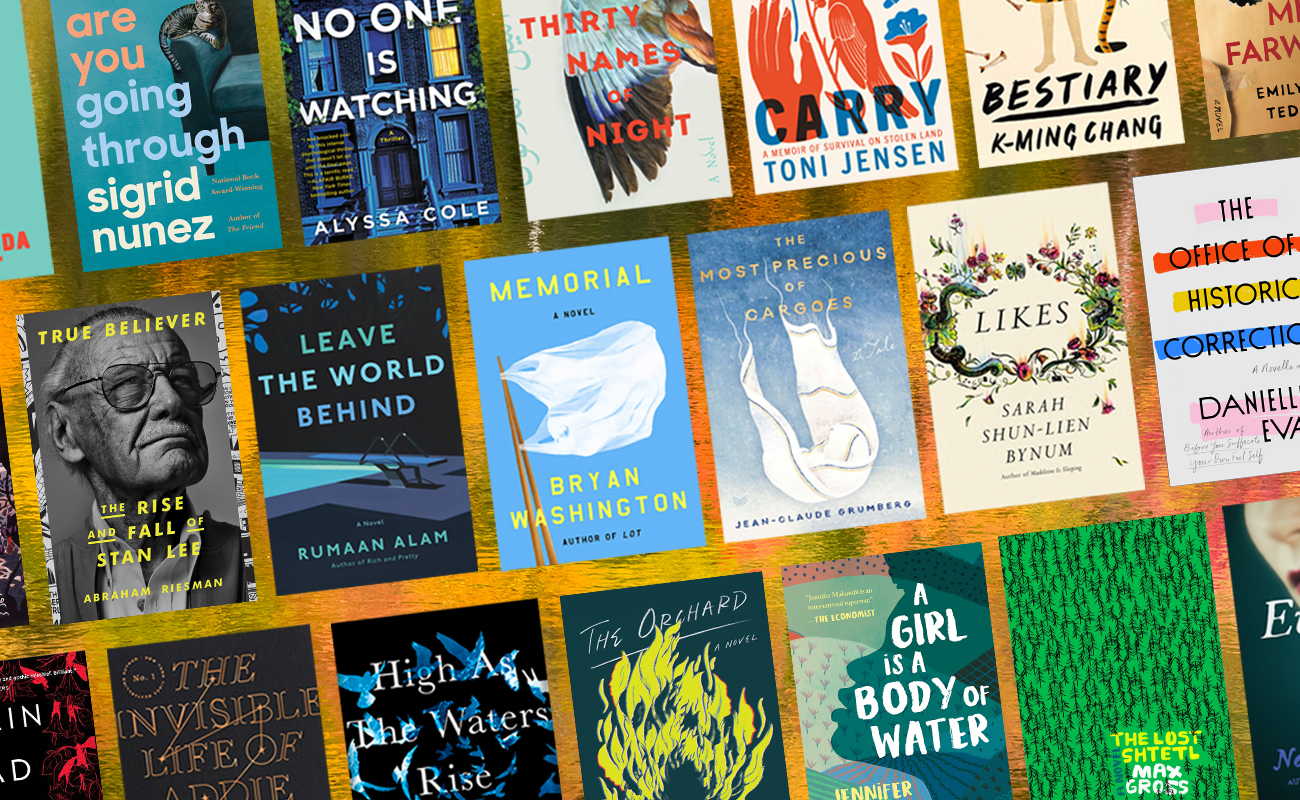It feels like just yesterday I was writing about summer books, which were being released into the middle of a global pandemic with no end in sight. Well, that was three months ago — and not much has changed. We’re still dealing with a pandemic, but at least we have a fresh new batch of books to look forward to!
This fall, as we celebrate the Jewish New Year amidst unprecedented times, and as those of us in the United States go vote in one of the most important elections of our lifetime, we also welcome the release of all sorts of books. From a primer on the rise of white supremacy (Talia Lavin’s Culture Warlords) to a lyrical story of queer love (Bryan Washington’s Memorial) to a gentrification thriller (Alyssa Cole’s No One Is Watching), there is something for everyone on this list, for whatever mood you’re feeling this fall. If you’re searching for catharsis, escapism, terrible anticipation, or just hoping to sink your teeth into a really, really, good book: We got you.
Also, un petit disclaimer: Yes, we are a Jewish culture site! No, we do not exclusively recommend Jewish authors and Jewish books! But yes, there are a few Jew-ier recommendations sprinkled in here, if that’s what you’re into.
We’re excited that this list is all shoppable on Bookshop, a platform supporting local bookstores. And now, in no particular order, our favorite books for September, October, and November 2020…
1. The Lost Shtetl by Max Gross (October)
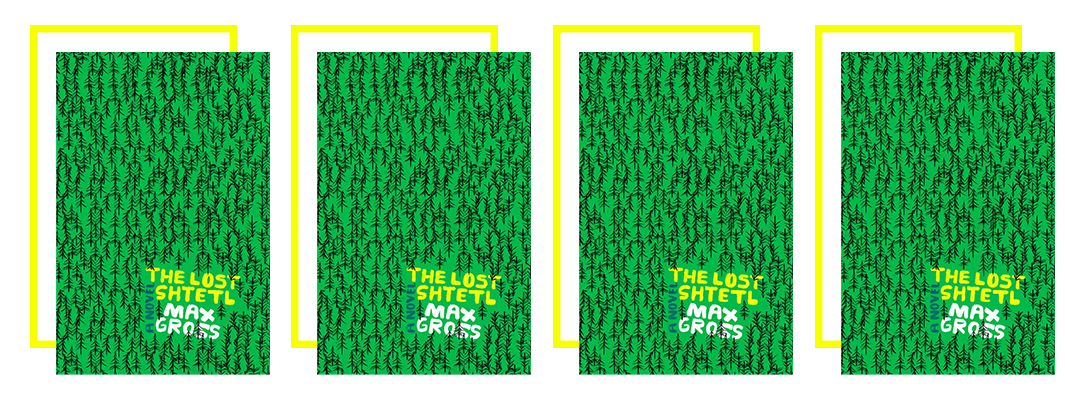
The Lost Shtetl is the most Jewish book I’ve read in a long, long time. And I write for a Jewish culture site, where I cover books. In Max Gross’s inventive novel, he imagines a shtetl, a Jewish village in Eastern Europe (in this case, Poland), that lost all contact with the outside world and has been forgotten. In Kreskol, the villagers have no idea what happened in the 20th century: they missed the Holocaust, the establishment of the state of Israel, the invention of wifi, and so much more. When a woman, Pesha, disappears from Kreskol, followed by her ex-husband, an orphaned baker, Yankel Lewinkopf, is sent beyond the walls of the shtetl to find them. He finds instead modern day Poland. What follows is a story of Jewish resilience, faith, assimilation, and, of course, anti-Semitism. The Lost Shtetl is at once funny and heartbreaking, gorgeously told, and imagines a world in which just one shtetl was saved from the destruction of European Jewry.
Read if you’re into: Jewish stories. Get it here.
2. Leave the World Behind by Rumaan Alam (October)
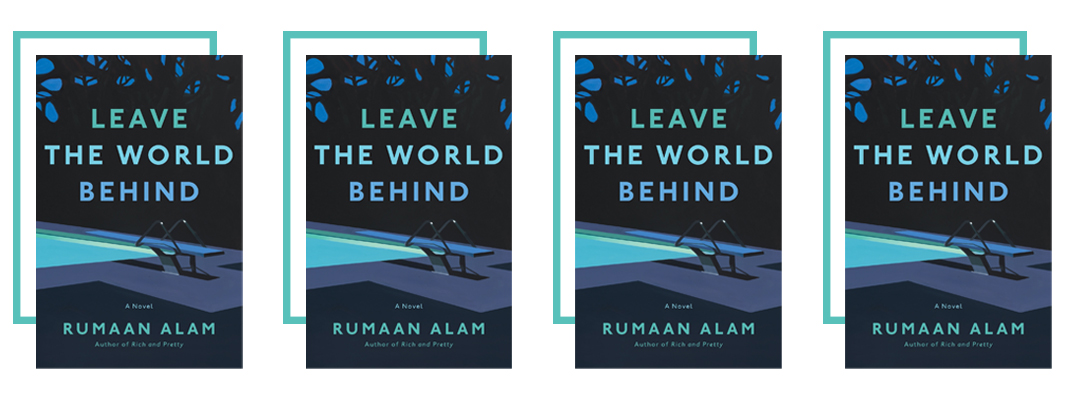
Leave the World Behind begins with a New York City family of four driving east, to a rental house in the Hamptons. Amanda and Clay are excited for a week away from it all with their two kids. There’s a sense of unease that lingers in the background — and comes to the fore when in the middle of the night, an elderly Black couple, G.H. and Ruth, knocks on their door, telling them they are the homeowners. They tell Amanda & Clay that New York City is in a blackout, and they felt safer coming out to their house versus their Upper East Side apartment. Soon, they realize the blackout is not just a blackout, but indicative of something much more terrible.
This line from Kirkus Reviews is perhaps my favorite description of the book: “Alam’s story unfolds like a dystopian fever dream cloaked in the trappings of a dream vacation.” As I read, I got increasingly more terrified, and more in awe of Rumaan Alam’s ability to capture nuances of messy families, racial tensions, and emergency situations. Most dystopian/apocalyptic novels don’t capture those scary first few days, instead relying on flashbacks, but what would happen in the first days of the end of the world? How would you react? What if you weren’t with your family or loved ones? What if you were with strangers? I don’t have the answers, but I won’t stop thinking about Leave the World Behind for a long time.
Read if you’re into: Smart, mysterious, gripping books. Also, reading about the end of the world. Get it here.
3. The Invisible Life of Addie LaRue by V.E. Schwab (October)
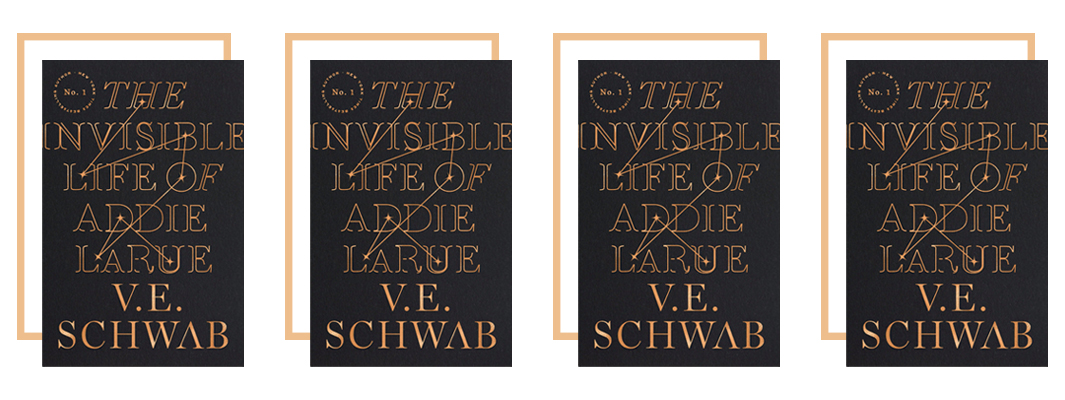
V.E. Schwab is perhaps best known for her Shades of Magic series (which, so good, go read if you haven’t yet), but her newest is unlike any fantasy novel you’ve read before. Addie LaRue is a young woman in 1700s rural France who makes a deal with a god of darkness, which promises her freedom and being tied to no one — but cursed with the fact that everyone she meets will forget her. Yet, one day, Addie meets Henry Strauss, a Jewish bookseller. When she returns the next day to the bookstore, he remembers her. Henry is the first person to remember her in 300 years, and so begins their tale. The Invisible Life of Addie LaRue is at once time travel, historical fiction, and a mediation on muses and art.
Read if you’re into: star-crossed lovers, historical fiction, fantasy. Get it here.
4. The Office of Historical Corrections by Danielle Evans (November)

This was one of my personal most anticipated reads for the fall, and oh my gosh Danielle Evans did not disappoint. The Office of Historical Corrections is a collection of stories and a novella, all dealing with complex issues of race and Black womanhood. But the standout is the titular novella, which imagines a government department that is mandated to correct historical inaccuracies.
I just want to note briefly: Remember all those antiracist reading lists that went viral in June? This should be at the top of them, not because it’s explicitly labeled “antiracist” but because I firmly believe in the power of fiction to tell powerful and important stories. Essentially, read Black fiction all year long.
Read if you’re into: short stories that pack a punch. Get it here.
5. The Most Precious of Cargoes by Jean-Claude Grumberg, translated by Frank Wynne (September)
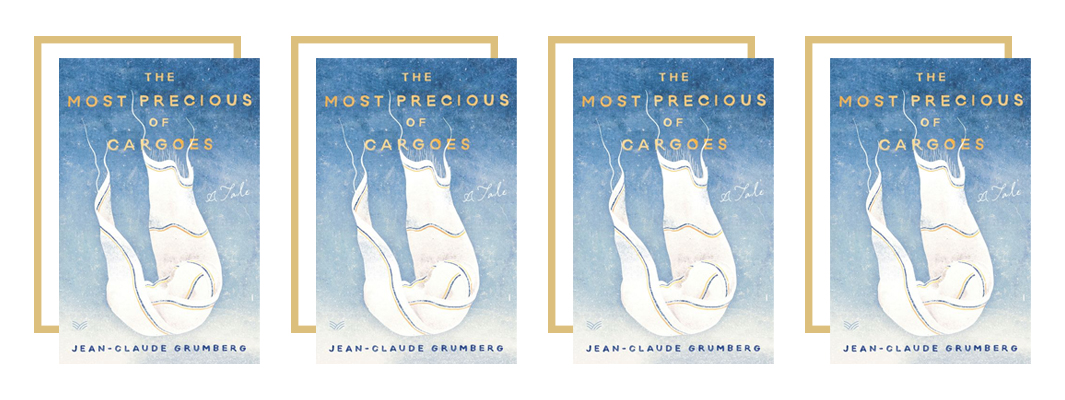
Jean-Claude Grumberg is a French Jewish writer who is best known for his plays and children’s books. He often focuses on the story of Jews during the Holocaust. In The Most Precious of Cargoes, he crafts a lyrical fairy tale of a woodcutter’s wife who watches trains hurtle through the woods every day, not knowing they are filled with Jews sent to their death. One day, a desperate father wraps his baby in a prayer shawl, woven from gold and silver threads, and throws her out the window. The woodcutter’s wife finds the baby, protects her, and raises her at great cost. It’s a short and moving novel, and a beautifully told story of a terrible time.
At the end of the story, headlined “Appendix for Lovers of True Stories,” we learn about the Grumberg family: Jean-Claude’s grandfather was on Convoy 45, a deportation of Jews from Drancy to Auschwitz on November 11, 1942. His father, Zacharie, was on Convoy 49, which left on March 2, 1943 for Auschwitz. (Here’s a timeline of deportations of French Jews.) In The Most Precious of Cargoes, you can feel Grumberg’s pain — but also his belief in the power of stories, and hope.
Read if you’re into: this is gonna sound weird, but, stories about the Holocaust. You know what I mean. Get it here.
6. Memorial by Bryan Washington (October)

Bryan Washington’s Memorial is the story of two gay men, Benson and Mike. They live together in Houston, where Benson, a Black man, works for a day care and Mike, a Japanese man, works at a Mexican restaurant. When Mike finds out his estranged father has stage four cancer, he decides to fly to Osaka to be with him — just as his mom, Mitsuko, has flown from Japan to stay with the couple in Houston. So leaves Benson and Mitsuko to navigate a weird living situation, and Mike to navigate what his father means to him. Washington explained “it’s a book about trying to navigate the creases a life can hold, and just trying to be okay.” And oh boy does it deliver: Washington creates two men so real it feels like even though the book ended, they will keep on living and figuring it out and making mistakes and falling down and getting back up again.
Read if you’re into: love stories and complicated families. Get it here.
7. Carry: A Memoir of Survival on Stolen Land by Toni Jensen (September)
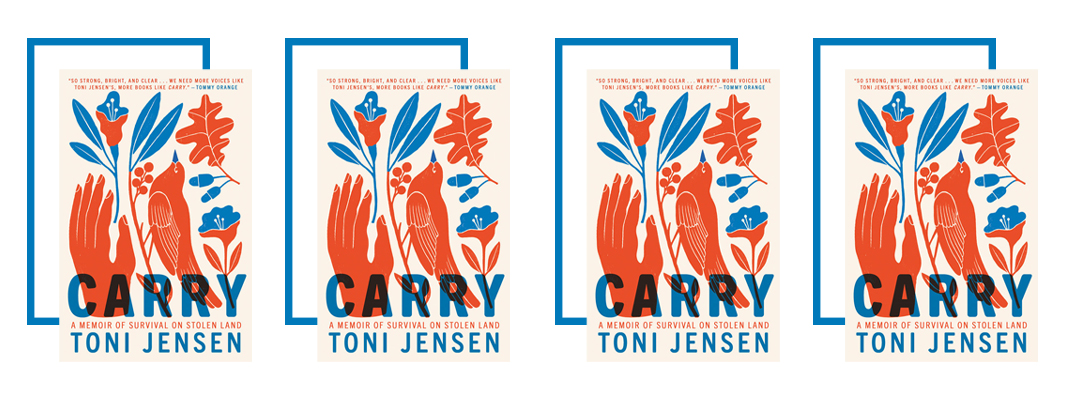
Toni Jensen’s memoir is stunning. There’s no other words that come to mind — it’s about growing up Métis, existing as an Indigenous woman in America, and the looming threat of ever-pervasive gun violence. The subhed, “A Memoir of Survival on Stolen Land,” is particularly fitting — Jensen is constantly reminding the readers of those who lived on the land where she is. It’s a land acknowledgement, again and again, to a powerful literary effect. “History is lived, in our lands and in our bodies,” Jensen writes. She writes about trauma and abuse and whiteness and mass shootings and rural America and southern America and violent neighbors. A must-read.
Read if you’re into: poetic memoirs, reflections on gun violence, Indigenous narratives. Get it here.
8. Transcendent Kingdom by Yaa Gyasi (September)
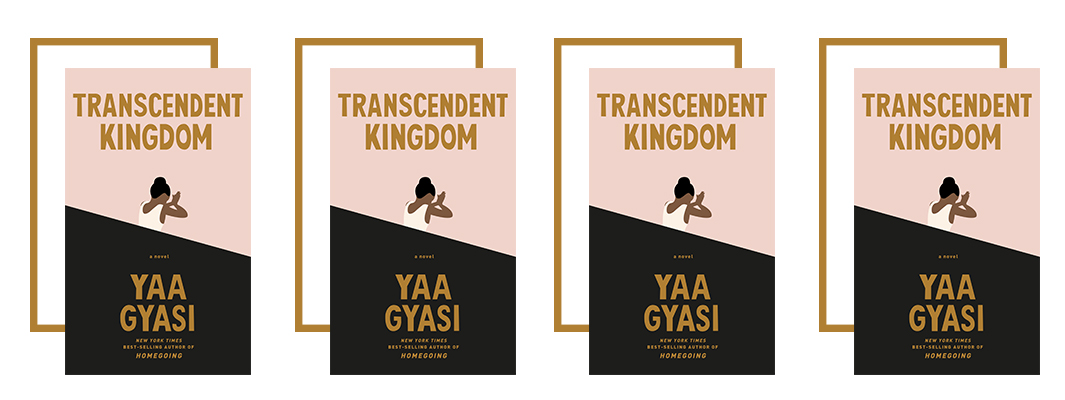
If you’re like me, you’ve been waiting for Yaa Gyasi’s second novel ever since finishing Homegoing three years ago. And oh man did she deliver with Transcendent Kingdom. The story focuses on Gifty, a PhD candidate in neuroscience at Stanford researching addiction. We learn, over the course of the story, that Gifty’s older brother Nana died of a heroin overdose, and Gifty’s work is largely to understand the why of addiction. It’s also the story of Ghanian immigrants living in rural Alabama, of evangelical Christianity, and of a fractured family. What struck me the most, however, was the meditations on faith and science and reconciling belief systems with learning about the way the world works.
Read if you’re into: stories of faith and science and addiction. Get it here.
9. Culture Warlords: My Journey Into the Dark Web of White Supremacy by Talia Lavin (October)
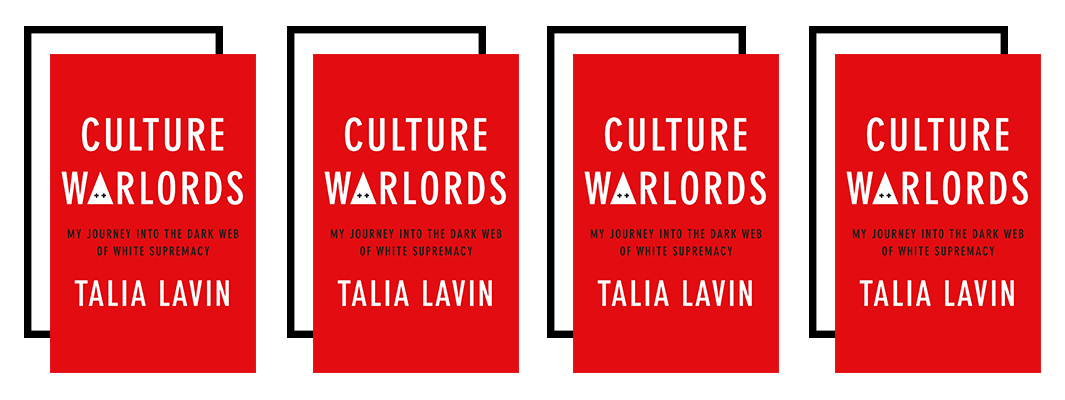
Holy wow. Talia Lavin’s Culture Warlords should be absolutely essential reading on the rise of white supremacy and anti-Semitism in this country. Lavin, herself a target of online extremist hatred, goes undercover into white supremacist groups online — from a white nationalist dating site to Telegram chat rooms of incels (“involuntarily celibate.”). What results is an unflinching look at hatred in the United States, and a deeply compelling read on modern anti-Semitism. There were moments I had to put the book down to take a deep breath and scroll through dog videos on TikTok, because the hatred that Lavin describes is just so vitriolic. I am in awe of her ability to chronicle the dark spaces that have flourished.
I can’t stop thinking about how Lavin ended the introduction: “Let Culture Warlords, such as it is, be part revenge, part explainer, and partly the story of what hate does to those who observe it and those who manufacture it. Let it be a manual that leads you to fight. For a better world for you, for me, for all the Black kids and Muslim kids and Jewish kids and trans kids and brown kids, who deserve a world free of the verminous miasma of hatred. Let us hold it to the light — this wet, rotting, malodorous thing — and let it dry up and crumble into dust and be gone.” And let us say: Amen.
Read if you’re into: thinking about anti-Semitism and white supremacy in the United States. Get it here.
10. Plain Bad Heroines by emily m. danforth (October)
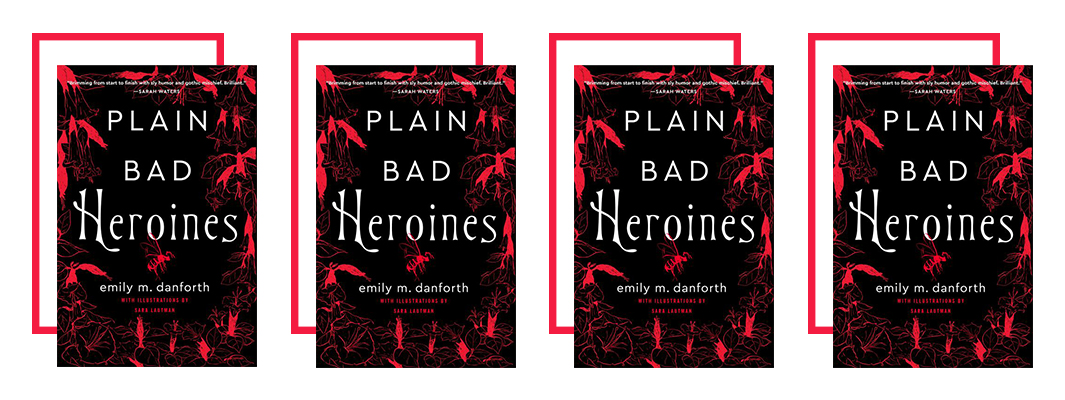
If a novel starts with a map, immediately I am in. And if the first chapter is titled, “One Macabre Afternoon to Begin,” and the first sentence begins, “It’s a terrible story and one way to tell it is this: two girls in love and a fog of wasps cursed the place forever after”? I am 100000% in. emily m. danforth’s Plain Bad Heroines is two stories, overlapping: One, the story of Flo and Clara, students at the Brookhants School for Girls in 1902, who are obsessed with the writer Mary MacLane, an openly lesbian woman. They start a club dedicated to Mary (the titular “Plain Bad Heroine Society”). Soon, Flo and Clara are found dead — with a swarm of yellow jackets around them, plus a copy of Mary’s memoirs. The school’s headmistress, Libbie, and her lover, Alex, are left to deal with the fallout. (No spoilers in this book preview!!) The second story: Flash forward a century, and writer Merritt tells the haunted and cursed story of the Brookhants School — and her story is (kinda) going to be adapted into a horror film starring lesbian actress (“celesbian”) Harper Harper as Flo and former child star Audrey as Clara. But the film is a lot more than it seems. It’s a lot of plot I am telling you, merely because I want to give you a sense of how expansive and delicious it is to sink your teeth into this queer, gothic novel. Plus, there are illustrations throughout. To be honest, this is the perfect fall read. Moody, atmospheric, gripping story, complex female leads, scary: Plain Bad Heroines has it all.
Read if you’re into: Gothic stories, reading spooky books in October, a story-within-a-story. Get it here.
11. When No One Is Watching by Alyssa Cole (September)
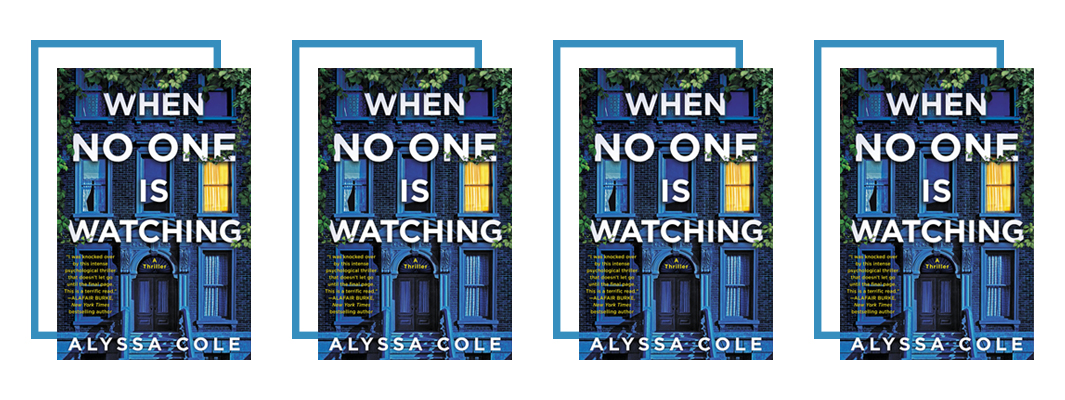
Okay, I’ve loved Alyssa Cole’s writing from her Reluctant Royals series, so when I saw she was writing a new thriller set in a gentrifying Brooklyn neighborhood, I thought: sign me up. When No One Is Watching is the story of Sydney, a Black woman who lives in a historically Black Brooklyn neighborhood that is rapidly changing — her elderly Black neighbors are disappearing while young, white families are moving in. The neighborhood is also being considered as a HQ for a pharmaceutical company, despite local resistance. But as Sydney works on a research project of the neighborhood and reluctantly teams up with a white neighbor, Theo, she begins to notice more and more strange things are happening. The publisher describes the thriller as Rear Window meets Get Out, which feels pretty apt. Cole herself calls the novel a “gentrification thriller,” and while it has elements of a thriller (paranoia, fear, tense plotting) much of it is just a slight exaggeration of what is happening in neighborhoods around the U.S. All in all, a fantastic read.
Read if you’re into: thrillers, AKA books that make you so anxious you have to stay up reading to find out what happens. Get it here.
12. Bestiary by K-Ming Chang (September)

K-Ming Chang’s debut novel, Bestiary, is the deeply original story of three generations of Taiwanese women. There’s Ama, who left Taiwan with two daughters and a solider husband suffering from PTSD; Mother, one of the daughters who grew up in harsh poverty; and Daughter, born in rural California and raised struggling with her identity and the legacies of Ama’s violence. Throughout, there’s magical realism; much of the core of the story rests on the myth of Hu Gu Po, a tiger spirit who lives in a woman’s body and eats the toes of children. It’s full of violence and history and raw emotion, and simply unlike anything I’ve read before in the best way possible.
Read if you’re into: magical realist stories of women, queerness, and girlhood. Get it here.
13. Bound in the Bond of Life, ed. Eric S. Lidji & Beth Kissileff (October)
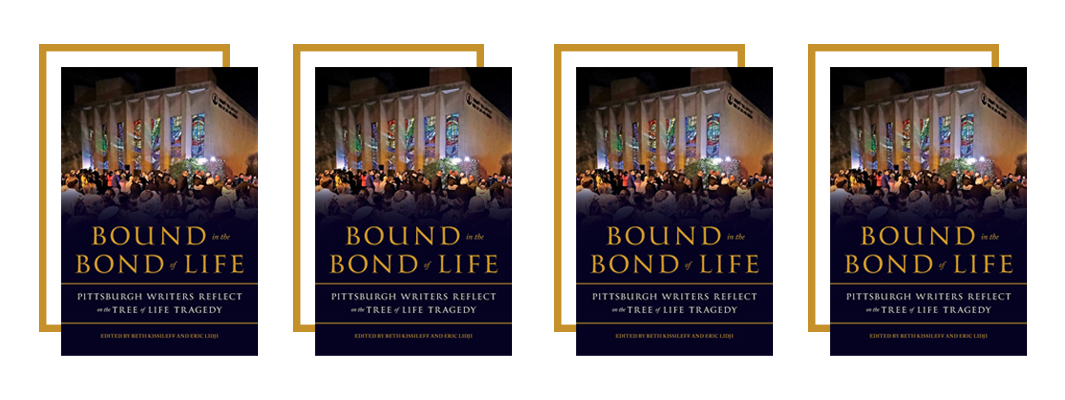
To mark the two-year anniversary of the Pittsburgh synagogue shooting, editors Eric S. Lidji and Beth Kissileff have gathered a wide range of Pittsburgh writers (24, including themselves) to reflect on the tragedy. There’s writings on growing up in the Jewish neighborhood of Squirrel Hill, on being a Jewish reporter for the Pittsburgh Post-Gazette covering the story, observing Shabbat while tragedy occurred, archiving the memorials, and so much more. I was particularly struck by the wide range of writers Lidji and Kissileff found to contribute to the volume, and saw my own experience covering the tragedy reflected back at me through the essays of the journalists.
Read if you’re into: things that will make you cry and feel proud to be Jewish. Get it here.
Note: A portion of the proceeds from the sale of this book will go to Jewish Family and Community Service of Pittsburgh.
14. True Believer: The Rise and Fall of Stan Lee by Abraham Riesman (September)
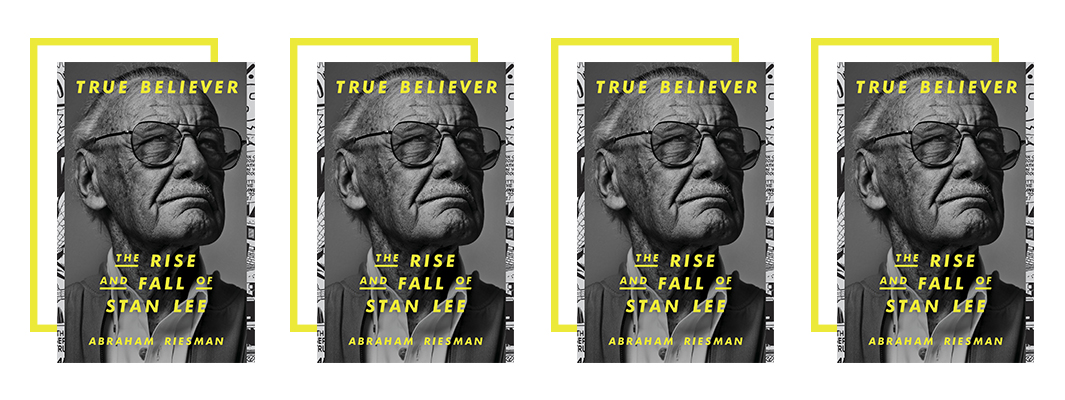
Before reading True Believer, my knowledge of Stan Lee was limited to “he’s the old guy that appears in the Marvel movies.” I vaguely knew who he was, but boy, Abraham Riesman does a marvelous (ha) job of taking his readers through the life of this comics legend. As he writes, however, “Stan Lee’s story is where objective truth goes to die.” Lee, born Stanley Martin Lieber in 1922, was a master of creating legends about himself. He told so many stories — so many false stories — over and over again that he believed them to be true. Riesman, to his credit, does a great job of unpacking these myths and half-truths, speaking to many people in Lee’s orbit. Lee was the head editor of Marvel during a time of unprecedented creativity (Spider-Man, Black Panther, the Avengers, Thor, and more all launched under his tenure), but he spent the rest of his life chasing fame and fortune that eluded him. One key thread throughout True Believer is who actually created all the iconic characters; Marvel illustrators (and authors) Jack Kirby and Steve Ditko long challenged Lee’s assertions that he was the “sole” creator. True Believer is highly readable, fascinating, and a must-read for anyone who has interacted with *anything* Marvel in their life. So, all of you.
Read if you’re into: comics, biographies, fascinating peeks behind the curtain. Get it here.
15. Likes by Sarah Shun-lien Bynum (September)
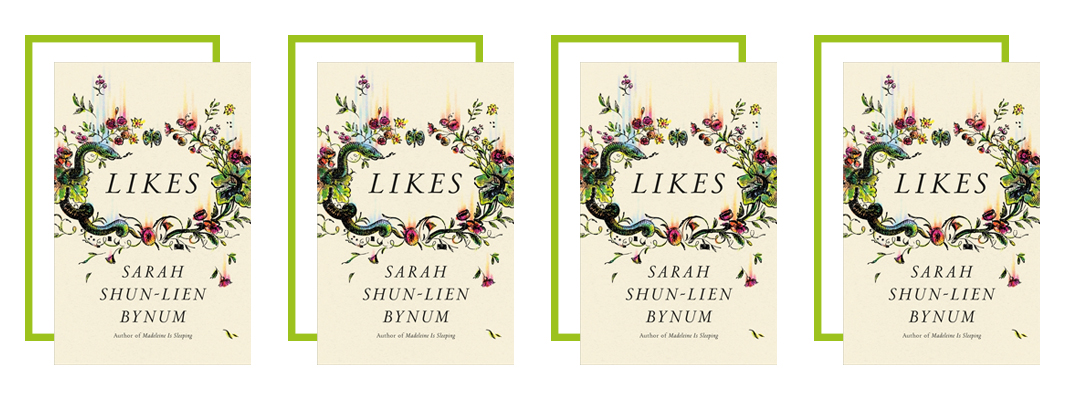
Sarah Shun-lien Bynum’s Likes is a wonderful short story collection. There are nine stories, from the titular “Likes” about a father analyzing his 12-year-old daughter’s Instagram posts, to my personal favorite, “Many a Little Makes,” about the friendship of three girls falling apart in high school. In each story, there’s an element of the otherworldly and magical — there’s one story about an ancient king — but each stays firmly rooted in astute observations of our reality: of how a teenage girl acts on social media; of how a Black writer on a crime show has to navigate his identity and his desire for a promotion; of a mom wanting her child to have a good education, and more. Every time I got to the end of the story, I wished it would keep going.
Read if you’re into: short stories that you don’t want to end. Get it here.
16. The Talented Miss Farwell by Emily Gray Tedrowe (September)
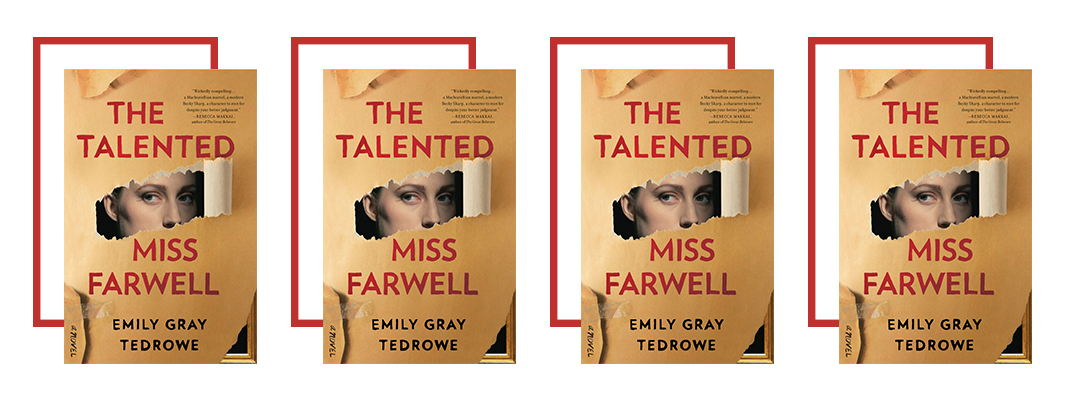
Emily Gray Tedrow’s The Talented Miss Farwell is a page-turner about a con woman who steals from her town government to make it big in the art world. A star pupil in high school but unable to attend college due to her ailing father, Becky Farwell takes a job at the local town hall. She starts to notice the finances are a mess and takes control. Soon, she’s the town’s comptroller, and everyone depends on her to make sure things happen. But secretly, she’s also Reba Farwell — a major player in the art world who built herself up from nothing. How long can she keep up the con? And is it worth it? A fantastic character — and compelling story.
Read if you’re into: the art world, Ocean’s 8, con women. Get it here.
17. Where the Wild Ladies Are by Aoko Matsuda, translated by Polly Barton (October)
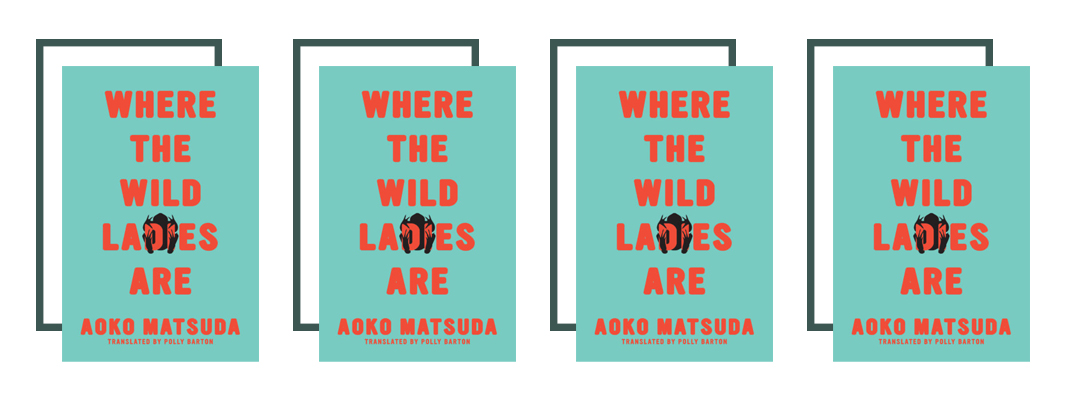
Aoko Matsuda’s short story collection is full of feminist retellings of Japanese folktales. Which: hell yes. By taking ancient stories and setting them in modern-day Japan, Matsuda insightfully uses the ghost tales to reveal greater truths about our society. My favorite was “Quite a Catch,” which tells the story of a man who goes fishing and fishes out a skeleton, who then comes back to life to visit him in the nighttime. According to the notes at the end, it’s based on the rakugo story Kotsutsuri (Skeleton Fishing) of a male geisha. Overall, these stories are engaging and surreal and smart. I also love the jacket copy, which informs the reader of the ghosts contained within: a busybody aunt ghost, a mud-caked lover ghost, a punk rocker wife ghost, a fox ghost, a castle-protecting ghost, and more.
Read if you’re into: ghost stories, duh!! Get it here.
18. What Are You Going Through by Sigrid Nunez (September)
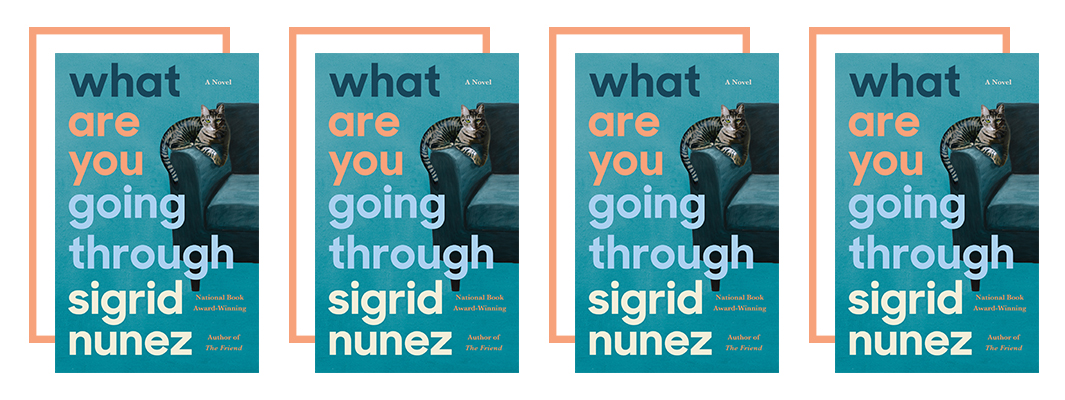
In What Are You Going Through, a writer describes a series of conversations she has with people, including her Airbnb host, her elderly neighbor, her ex, a childhood friend hospitalized for terminal cancer — mainly letting these people speak for themselves. There’s not really a “plot” in the novel, which is something Sigrid Nunez excels at (go read The Friend); rather, it’s a series of reflections and observations on ideas like “women’s stories are often sad stories.” The only (kind of) plot is when the dying friend with cancer asks the woman (our narrator, kind of), to be with her at the end of her life. I won’t spoil much more — this is the type of book you sit down, start reading, and want to savor every sentence.
Read if you’re into: SIGRID NUNEZ, y’all. But also: thinking about friendship, death, aging, and neighbors. Get it here.
19. Evening by Nessa Rapoport (September)
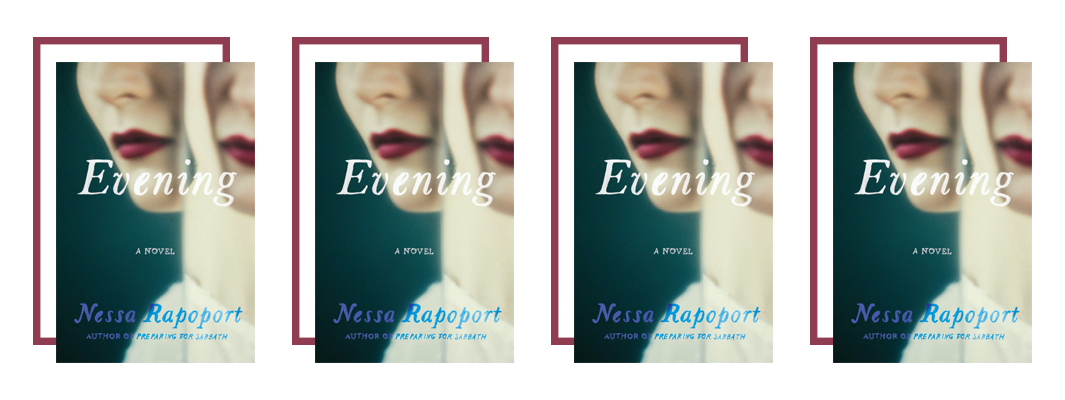
Nessa Rapoport’s Evening is set over the seven days of a shiva. Eve’s sister Tam has died from cancer, and Eve has returned to her childhood home in Toronto for the funeral and Jewish mourning period. Eve and Tam were close growing up — but as Tam rose to prominence in her career as a Canadian TV broadcaster and became a mom, while Eve taught and worked on a dissertation in New York City, they fought more frequently. Evening, then, becomes a reflection on sisterhood and difficult fights and what it means to live. Rapoport weaves in Jewish details beautifully, making the story come to life.
Read if you’re into: Jewish stories, sisterhood. Get it here.
20. A Girl Is a Body of Water by Jennifer Nansubuga Makumbi (September)
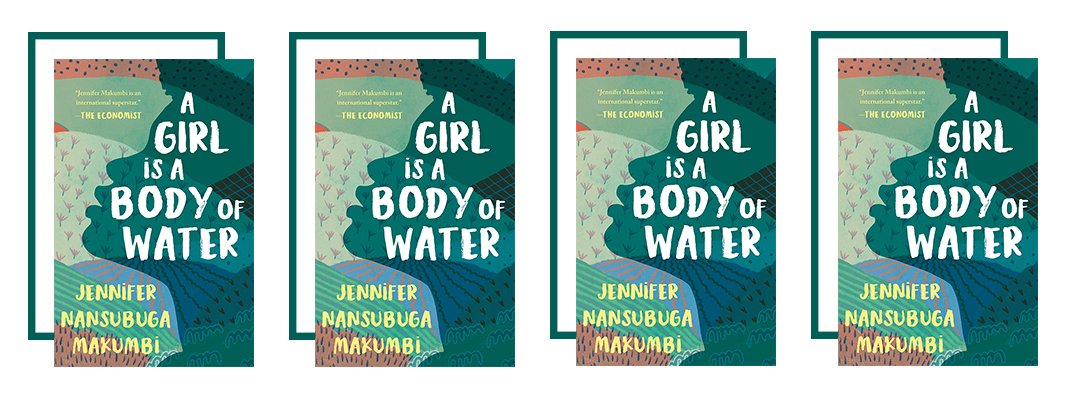
Ugandan writer Jennifer Nansubuga Makumbi, author of Kintu, returns with another epic story: This time, she tells the tale of Kirabo, a young Ganda girl living with her grandparents in Nattetta, a village in rural Uganda. Kirabo, who is 12 when the story begins, has never met her mother. Her father, Tom, brought her to her grandparents when she was born, and they raised her — no questions were ever allowed about her mother. Soon, Kirabo seeks out Nsuuta, a blind witch, in an effort to discover her mother. After her grandmother discovers Kirabo is visiting with Nsuuta, she is finally sent to live with Tom — then promptly sent to boarding school. We see Kirabo grow up with the shadow of Idi Amin’s rule in the background, and the subsequent Ugandan-Tanzanian War. Throughout, Makumbi’s writing is lyrical and vivid as she not only captures Kirabo, but the world and community that Kirabo is navigating.
Read if you’re into: coming of age stories, womanhood, female friendships. Get it here.
21. Mad & Bad: Real Heroines of the Regency by Bea Koch (September)

Alongside her sister Leah, Bea Koch started The Ripped Bodice, the first romance-only bookstore in North America. The Jewish sisters opened their doors in spring 2016 in Culver City, California and have since built a robust online following. (Read our story on them here!) Koch’s debut book is about romance — obviously — but more specifically, about the women who shaped the Regency era, the period from 1810 to 1820 that features prominently in many historical romances. In the introduction, she writes, “The sad truth of history is that so many of these stories are lost. And the stories of people of color and women are disproportionately so. The happy truth is that we’re still rediscovering stories every day. History is more alive than ever as we turn our attention to those who have been left to languish in the shadows and those who have been cast in a singular light.” Koch shines her light, magnificently, on the women who defined this era — including a fantastic chapter on Jewish women in the Regency. I learned so much!!
Read if you’re into: history! Women! Romance! Get it here. Or, order from Bea’s bookshop The Ripped Bodice here.
22. Three Rings: A Tale of Exile, Narrative, and Fate by Daniel Mendelsohn (September)
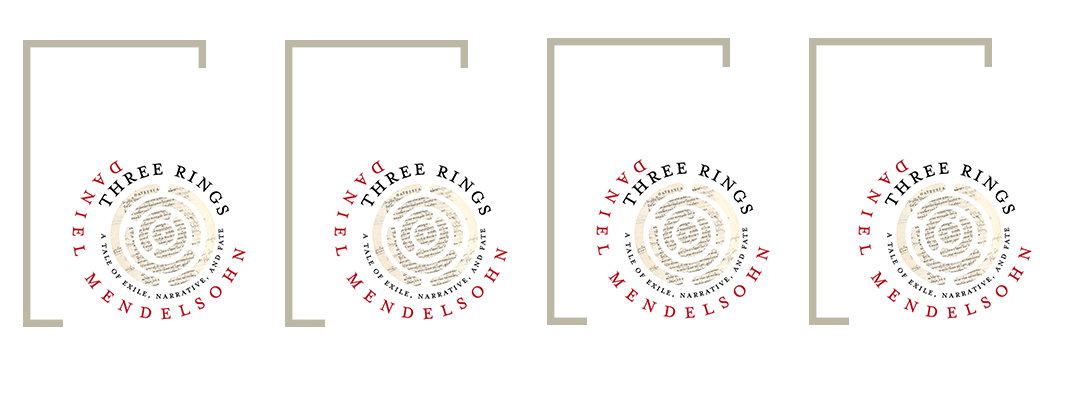
I had never heard of ring composition before reading Three Rings, by Jewish scholar Daniel Mendelsohn. As he explains, ring composition is when “the narrative appears to meander away into a digression (the point of departure from the main narrative being marked by a formulaic line or stock scene), although the digression, the ostensible straying, turns out in the end to be a circle, since the narration will return to the precise point in the action from which it had strayed…” Why should you care? Well, Mendelsohn masterfully demonstrates ring composition by writing a book that is in that structure, telling the story of three exiled writers: German Jewish writer Erich Auerbach, French archbishop François Fénelon, and German novelist W. G. Sebald. Also included is the story of the original ring composition, The Odyssey, and Mendelsohn’s own story — grappling with the death of his father searching for his relatives who survived the Holocaust.
I greatly enjoyed Mendelsohn’s comparison of the Hebrew style (the “pessimistic way”) and the Greek style (the “optimistic way”) of telling stories: the former, opaque and subject to interpretation; the latter, explaining everything as much as possible. In reading Three Rings, I felt at times overwhelmed by the sheer amount of knowledge, but impressed by how it all connects. And, I felt like someone understood how my brain works: Well, you can’t understand that until you understand this, this, and this.
Read if you’re into: genre-hopping literature that combines Greek myth, literary criticism, and memoir. Get it here.
23. World of Wonders: In Praise of Fireflies, Whale Sharks, and Other Astonishments by Aimee Nezhukumatathil (September)
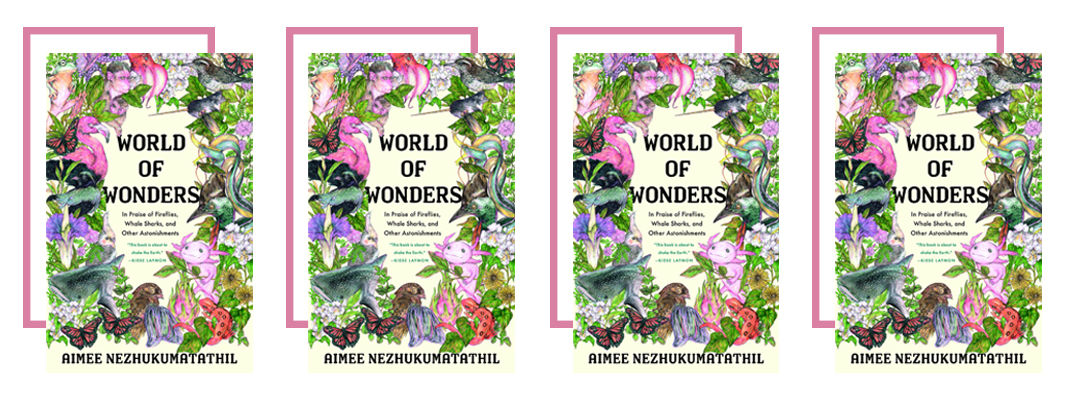
Speaking of genre-bending memoirs, enter Aimee Nezhukumatathil’s beautiful and poetic paean to various animals and plants. Each essay in this collection centers on one thing, be it peacocks, touch-me-nots, axolotls, or ribbon eels. We learn a little about the animal/plant, and then Nezhukumatathil uses it as a prism to reflect on her own life. Plus, there are lovely illustrations throughout by Fumi Nakamura. Nezhukumatathil’s background as a poet is clear through each essay; you can feel her joy at these varied animals and plants, but also the thoughtfulness with which she writes to describe them. My favorite was the “Firefly” chapters that book-ended World of Wonders, reflecting on her own childhood and the childhoods of those growing up today.
Read if you’re into: the natural world, poetic memoirs. Get it here.
24. The Orchard by David Hopen (November)
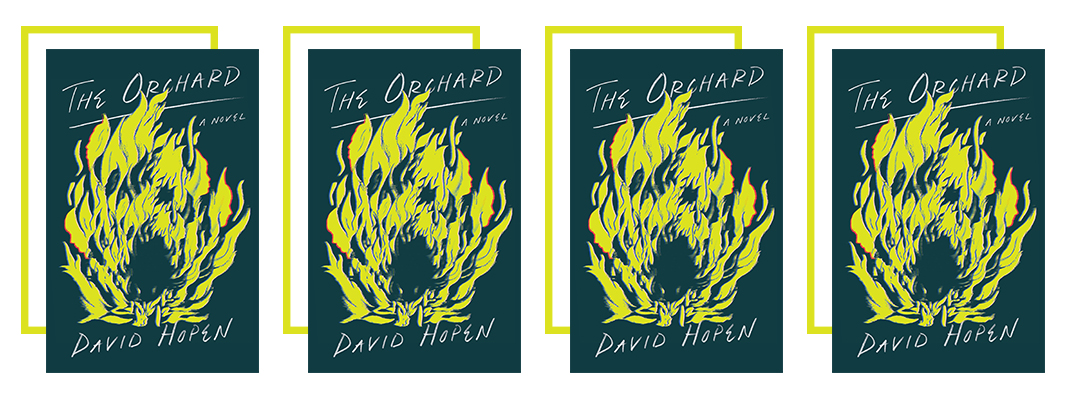
At the start of The Orchard, 17-year-old Aryeh “Ari” Eden moves from his Orthodox community in Brooklyn to a Jewish suburb of Miami. He goes from an all-boys yeshiva, where the focus is on Torah above all else, to an all-gender Jewish day school — where there are hook-ups, drinking, drugs, and reckless nights out. I don’t want to spoil much for you, because David Hopen’s magnetic debut is really meant to unfold as you read it. What I was struck by is how seamlessly Hopen weaved very Jewish concepts,and debates about Judaism, morality, and God. The title derives from Pardes, “the paradisal orchard of Torah knowledge.” The ending was explosive — and one I’ll be thinking about for a long time.
Read if you’re into: coming-of-age stories, the push and pull between the secular and Orthodox Jewish world, Talmud, and dark high school stories. Get it here.
25. Loving Sports When They Don’t Love You Back by Jessica Luther and Kavitha A. Davidson (September)
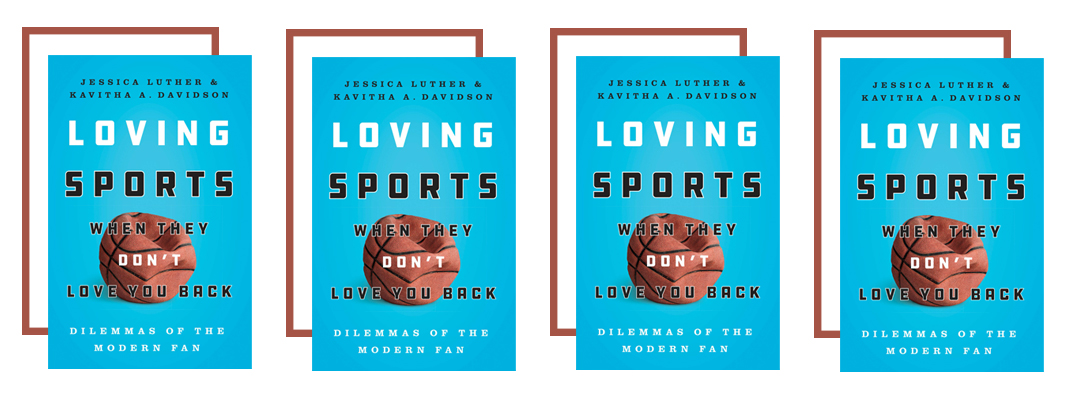
The second I saw Burn It All Down podcast co-host Jessica Luther tweet about her forthcoming book Loving Sports When They Don’t Love You Back, I was so excited. Burn It All Down (“the feminist sports podcast you need”) is one of my favorite podcasts, a show that amplifies non-male voices in sports, and discusses equality, racism, misogyny, and more. But let’s get to the book: Luther co-wrote Loving Sports When They Don’t Love You Back with fellow sportswriter Kavitha A. Davidson, and they dive into “the intersections between sports and politics, sports and culture, sports and our own identities, sports and the ills of the world. We want to sit in those intersections.” And sit, thoughtfully, they do; there are chapters on racist mascots to domestic violence to how the Olympics harm local communities. My favorite, however, was the last chapter, which in many ways was the thesis of their book: on embracing the fact that athletes, and sports, are political. And to ignore that, or to call sports “apolitical,” is a major failure. A well-researched, engaging collection of essays on all the messiness that surrounds the world of sports.
Read if you’re into: sports, but also if you’re not a sports fan, you will still like this. Get it here.
26. His Only Wife by Peace Adzo Medie (September)
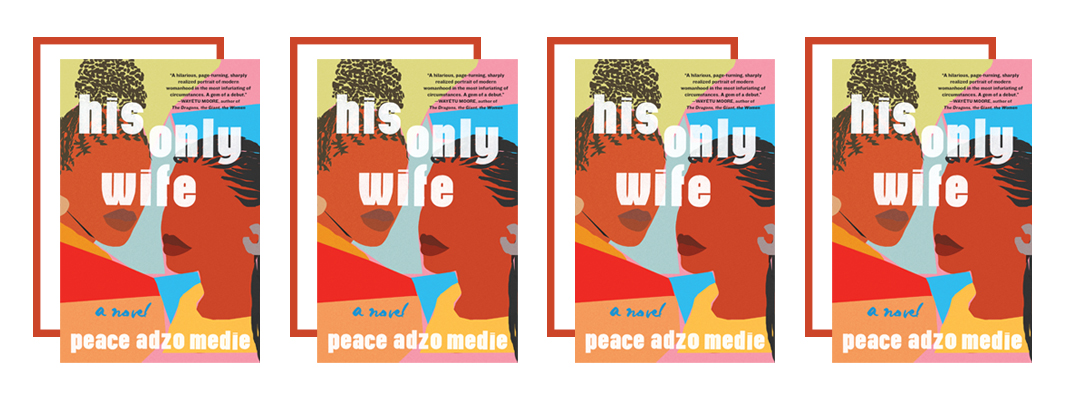
Peace Adzo Medie’s novel His Only Wife is a feminist page-turner. Hear me out: At the start of the story, Afi, a 21-year-old seamstress marries a wealthy businessman, Elikem (“Eli”). Except Eli isn’t at the wedding — rather, his brother, Richard, stands in for him. Afi is set up to marry Eli because his family dislikes his current partner, a forward-thinking Liberian woman with whom he has a daughter. Afi, a Ghanian woman, is chosen by Eli’s family to bring him away from “that wicked woman.” Afi, alone, moves to Accra, where she begins to build a new life — all while feeling pressure from her mother, and Eli’s family, to get Eli to leave his girlfriend/partner. I was hooked from the first line — “Elikem married me in absentia; he did not come to our wedding” — to the very end. A worthwhile read.
Read if you’re into: family drama, finding your voice, compelling protagonists. Get it here.
27. Homeland Elegies by Ayad Akhtar (September)
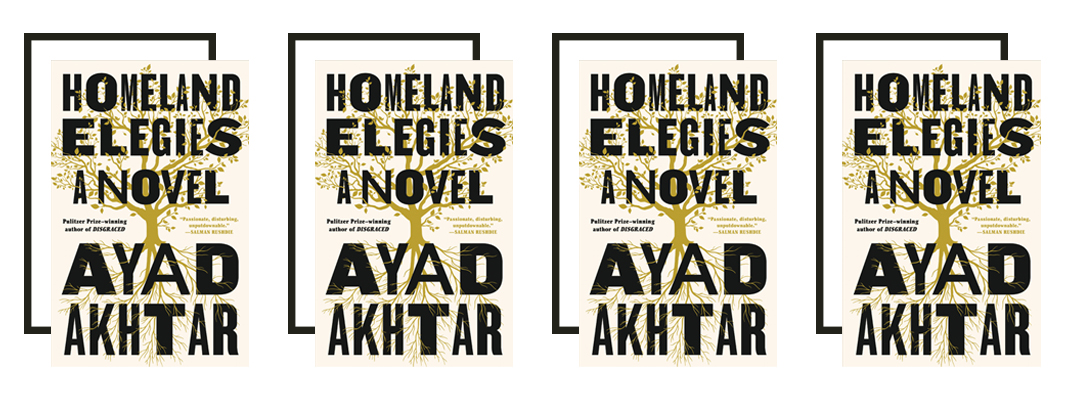
Ayad Akhtar’s mesmerizing new novel, Homeland Elegies, is his story. Sorta. Let me just defer to Akhtar himself: “Yes, it’s a novel. But with a narrator who has my name and many of the biographical facts of my life. Or almost. So much is real, but even that which is, has been deformed just enough to be more useful to the story, to the portrait of our country. I needed a form that could convey or embody, the collapse of fact into fiction, could express the confusion between what is true and what is a good story that has overtaken our lives.” It is the tale of his father, born in Pakistan, who immigrated to America, but it is also the story of Akhtar grappling with the rise of Trump.
Read if you’re into: stories of Muslim Americans, books that grapple with our current political moments, autofiction. Get it here.
28. Jack by Marilynne Robinson (September)

In 2004, Marilynne Robinson published Gilead, the story of Reverend John Ames, a dying Congregationalist minister who writes the account of his life for his son. He tells of his father and his grandfather, and the story spans the Civil War to the 20th Century. It won the Pulitzer Prize. Since then, Robinson has returned to the fictional town of Gilead, Iowa: in Home (2008) and Lila (2014), which both tell the story from new perspectives. Now, she’s back with Jack, the fourth novel in this series, which tells the story John “Jack” Ames Boughton, the son of Robert Boughton, named after Rev. John Ames. Jack is the story of Jack’s relationship with Della Miles, a Black woman and high school teacher. Just as Gilead made waves for its insight into American culture and history and the push/pull between faith and modernization, so will Jack on its deft handling of interracial relationships and Black Americans. Its release is perfectly suited for our current moment.
Read if you’re into: I mean… Marilynne Robinson. Get it here.
29. Mill Town: Reckoning with What Remains by Kerri Arsenault (September)
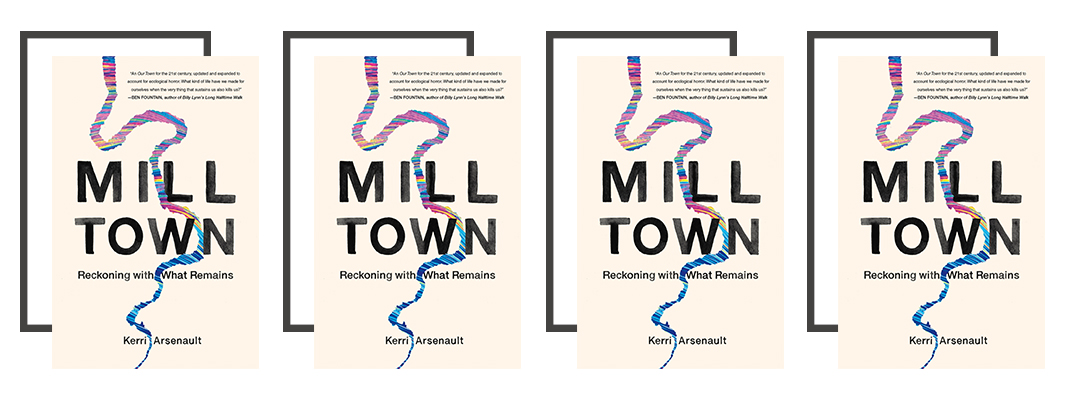
Kerri Arsenault grew up in Mexico, Maine, a rural town on the Androscoggin River, where the main employment was a paper mill. In 2009, she returns to Mexico to research her family’s history and begins to discover how many family members died of cancer. Soon, this pushes Arsenault to dive into the devastating environmental impact the mill had on the town, nicknamed “Cancer Valley.” Arsenault calls Mill Town an “autoethnographic investigation,” which in essence is a combination of her own childhood and relationship to Mexico, Maine, but also an investigation into historical archives and scientific reports. If you want to understand the collapse of working-class American towns, read Mill Town.
Read if you’re into: memoirs that are also investigative reporting, thinking about the environment and toxins and the working class. Get it here.
30. The Bass Rock by Evie Wyld (September)
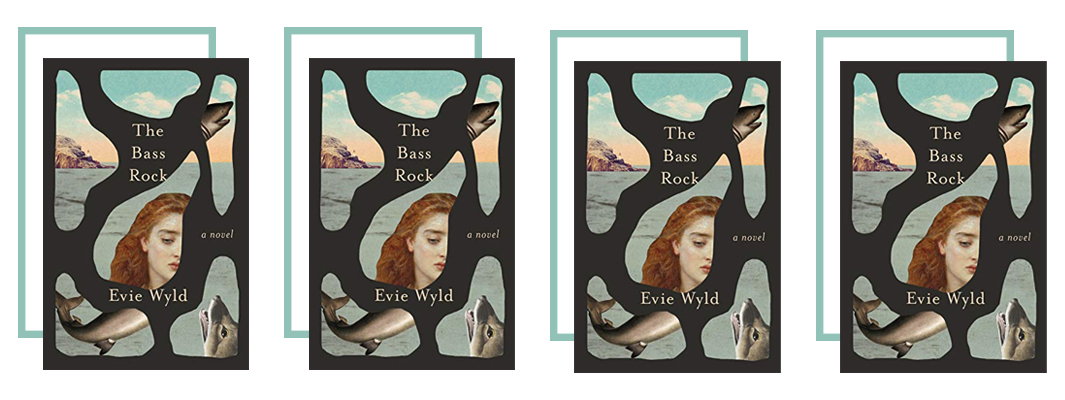
Evie Wyld’s The Bass Rock tells the story of three women, all who live in a house overlooking the Bass Rock, an island in the east of Scotland. There’s Viviane, in the present day, returning to the house after the death of her father; Ruth, in the postwar period; and Sarah, a teenager in the 1700s who’s accused of being a witch. (Sarah’s narrative alone is not from her perspective; rather, her story is told from the perspective of Joseph, a local village boy.) We switch from Viviane to Ruth to Sarah throughout the novel, boomeranging through time and the violence of men. One review called The Bass Rock “a fearless vision of toxic masculinity,” and I am inclined to agree; in the novel, there is so much violence against women, it is hard to stomach at times. Yet it’s still completely worth your time and attention.
Read if you’re into: family sagas, stories spanning generations, women’s anger. Get it here.
31. Paper Bullets: Two Artists Who Risked Their Lives to Defy the Nazis by Jeffery H. Jackson (November)

Paper Bullets is the story of two artists, Claude Cahun and Marcel Moore, who distributed “paper bullets” — anti-Hitler notes, calls to rebel, and more — across their home on Jersey island, a British Channel island. Behind the avant-garde artists are queer women: Lucy Schwon, who was Jewish, and her partner, Suzanne Malherbe. They lived together and worked together and created art and resisted the Nazi occupation. Jeffery H. Jackson does a remarkable job of telling the story of their lives in Jersey, and their acts of resistance from 1937 to 1944. Note: Jackson uses their birth names, Lucy and Suzanne, throughout the book, as Cahun and Moore were the names they used for their creative art. And, as he notes, he uses feminine pronouns as they were the pronouns they used — even if their gender and sexual identities were what we may define now as non-binary and queer. Overall, I am so glad their story is finally being told.
Read if you’re into: Claude Cahun and Marcel Moore!!! Queer artists defying the Nazis!!!!! I MEAN!! Get it here.
32. The Thirty Names of Night by Zeyn Joukhadar (November)
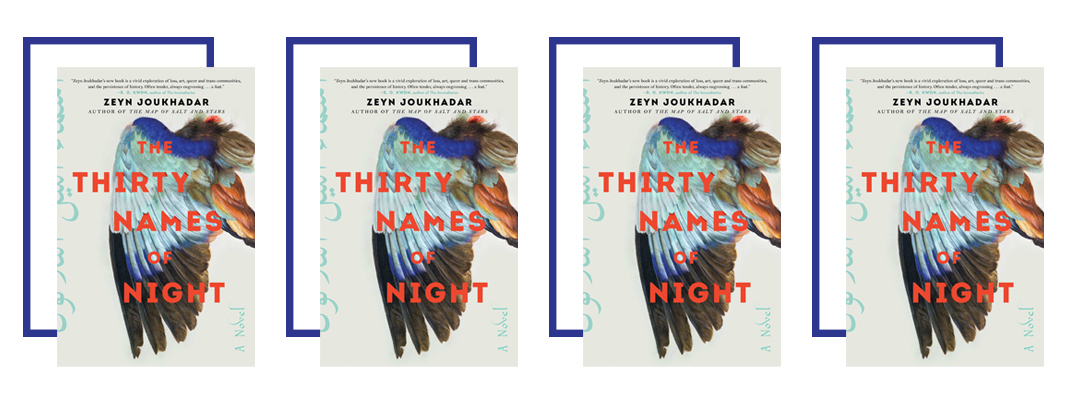
The Thirty Names of Night tells the story of a Syrian American trans boy who is mourning the loss of his ornithologist mother while struggling to come out to his family and community and navigate his Muslim identity. Zeyn Joukhadar, who is a non-binary Syrian American writer, brings vivid detail to this story. Interwoven with the millennial artist’s tale is the story of Laila Z., a Syrian artist who painted birds. Our protagonist finds her diary one evening when he is painting a mural on an old tenement in what used to be Little Syria, and is soon swept up in her story and begins searching for a painting of a rare bird. What I thought Joukhadar did so magnificently was tell at once a story of New York City’s past and its immigrant communities — in this case, the Syrian community — but also rooted firmly in the present, and of the queer Muslim community in the here and now.
Read if you’re into: immigrant stories, queer stories, and honestly, birds. Get it here.
33. High as the Waters Rise by by Anja Kampmann, translated by Anne Posten (September)
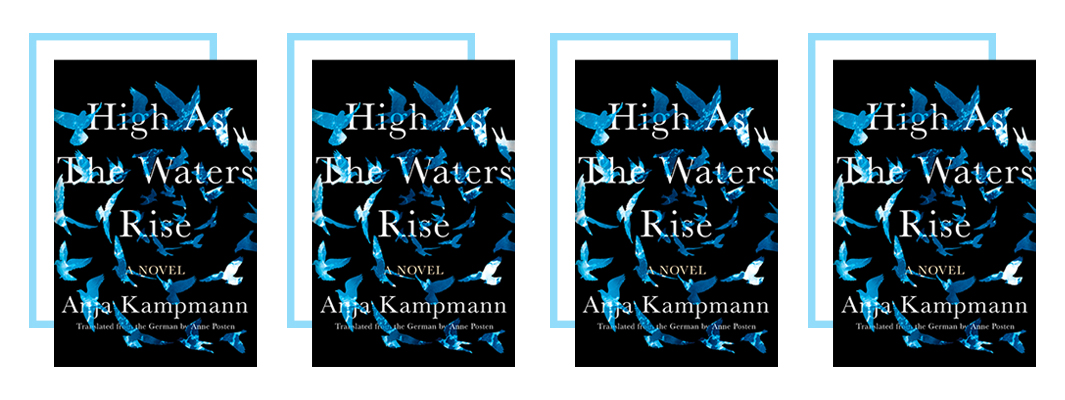
In High As The Waters Rise, our protagonist, Waclaw, works on an oil drilling platform in the middle of the Atlantic sea. One night, he returns to his bunk to find his best friend and fellow rig oil worker, Mátyás, missing. Soon, Mátyás is declared dead, Waclaw is given time off and flown back to land, and thus begins his search for meaning. Beginning in their apartment in Tangier, Morocco, he ends up in Mátyás’s hometown in Hungary, Malta, rural Italy, and his mining hometown in Germany, where his devoutly Catholic father worked and died. Anja Kampmann’s novel, translated from the German by Anne Posten, is meandering — in a good way. You feel Waclaw’s pain and sorrow for his lost friend. You feel how terrible the oil drilling business is, and how it crushes the men who work on the rigs. I loved Ilana Masad’s blurb: “Memory moves in and out of the present like the tides… we are treated to the most vivid particulars, the glory of specifics, the full human reality of a character whose attempt to wander away from deadening grief only reminds him time and time again of all the many ways he has and does and can still feel alive.” Can we ever really escape our grief?
Read if you’re into: stories of grief and the impact of exploitation of the planet. Get it here.
34. I Want to Be Where the Normal People Are by Rachel Bloom (November)

Jewish comedian Rachel Bloom is BACK. The Crazy Ex-Girlfriend star‘s follow-up project to her critically acclaimed TV show is not The Nanny Broadway adaptation (though that is in the works), but a collection of heartfelt, funny essays. This is the one book on the list I couldn’t snag an advanced copy of (Rachel, and Rachel’s publicist, my DMs are open!), but I am on Rachel Bloom’s fan club e-mail list and here’s what she had to say about it there: “When I wrote it in the Before Times, it was a comedic but vulnerable piece about my relationship to the idea of normalcy. It’s still that but, since the idea of ‘normal’ has now been shot in the head execution-style, this book can also be used as a way to escape to a simpler time. Either way, it’s a collection of personal essays, bad poetry, amusement park maps, and even a full-length musical. I’m very proud of it and, as you’ll see, the ending is a love letter to fans of my work.” I can’t wait to read this book.
Read if you’re into: This one is obvious, right? All things Rachel Bloom. Get it here.
35. Magic Lessons by Alice Hoffman (October)
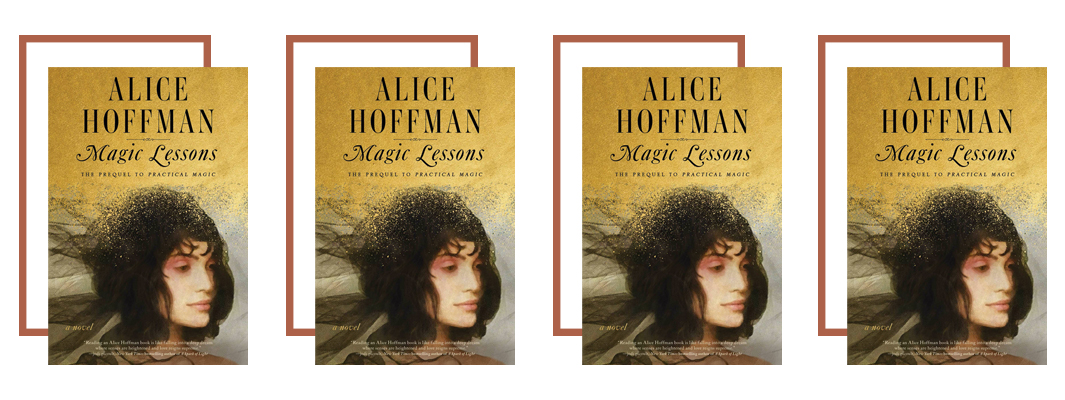
A prequel to our beloved Practical Magic!!!! If you have seen the classic 1998 film starring Sandra Bullock and Nicole Kidman, or read the 1995 novel it was based on (Practical Magic, celebrating its 25th anniversary this year), you know the plot is that for generations, the men that the Owens women fall in love with are doomed to an untimely death. This curse is because of Maria Owens, a young witch from Salem, who was exiled with her unborn child for escaping her execution. Now, finally, we get Maria’s story. I love the note from Alice Hoffman at the start of the copy I read: “Maria’s story, of a woman alone with child making her way in a dangerous world, is both magical and practical, but her path echoes the struggles of many of us. You don’t have to be a witch to know what it’s like to be an outcast. And you don’t have to have magical powers to be willing to do anything for your daughter.”
So I’ll end our fall books preview here: Cheers to drinking some midnight margaritas and curling up with a good book.
Read if you’re into: witches, naturally. Get it here.
Disclosure: This post contains affiliate links, which means we may receive a commission if you click a link and purchase something that we have linked to. While clicking these links won’t cost you any extra money, they will help us keep this site up and running. Thanks!
